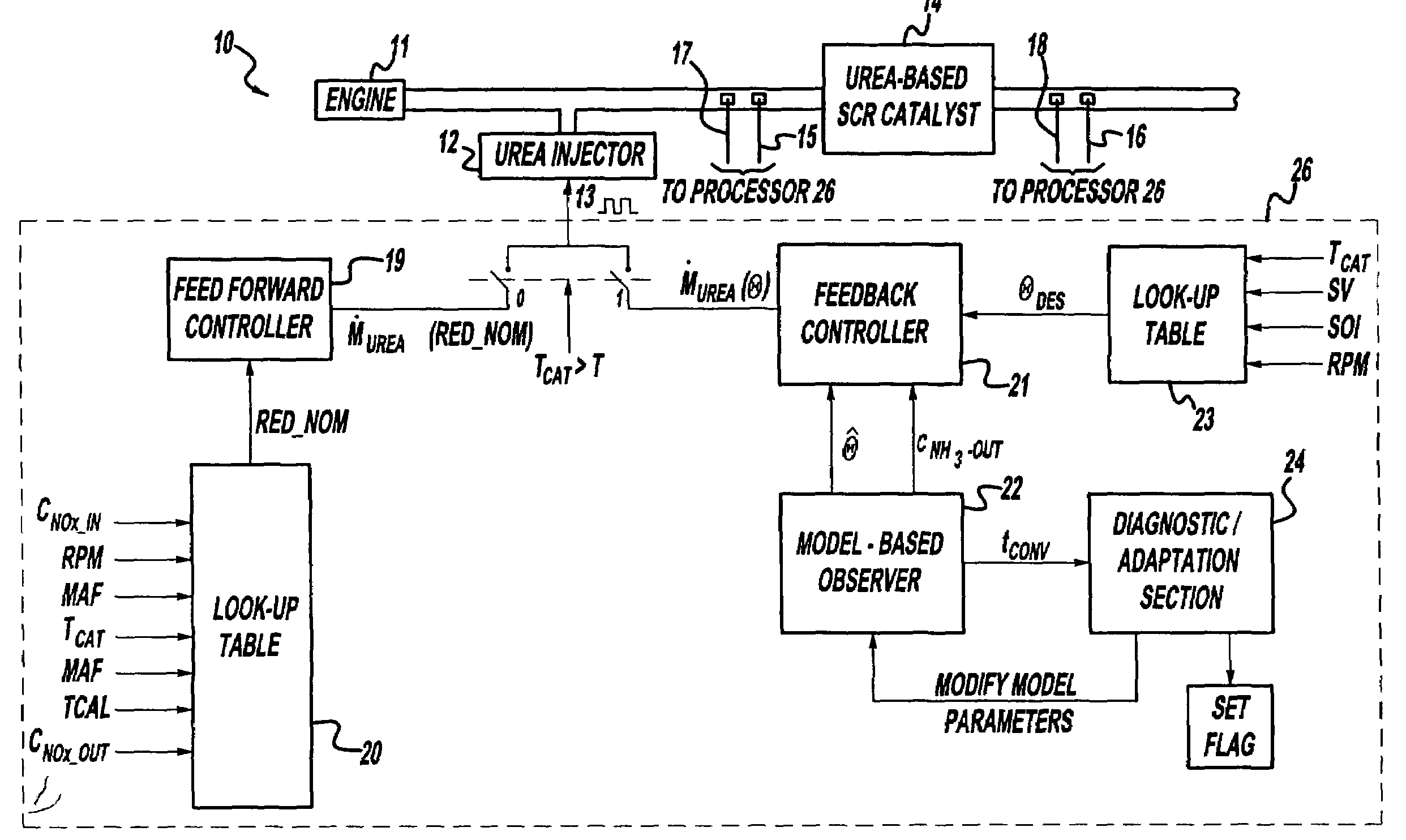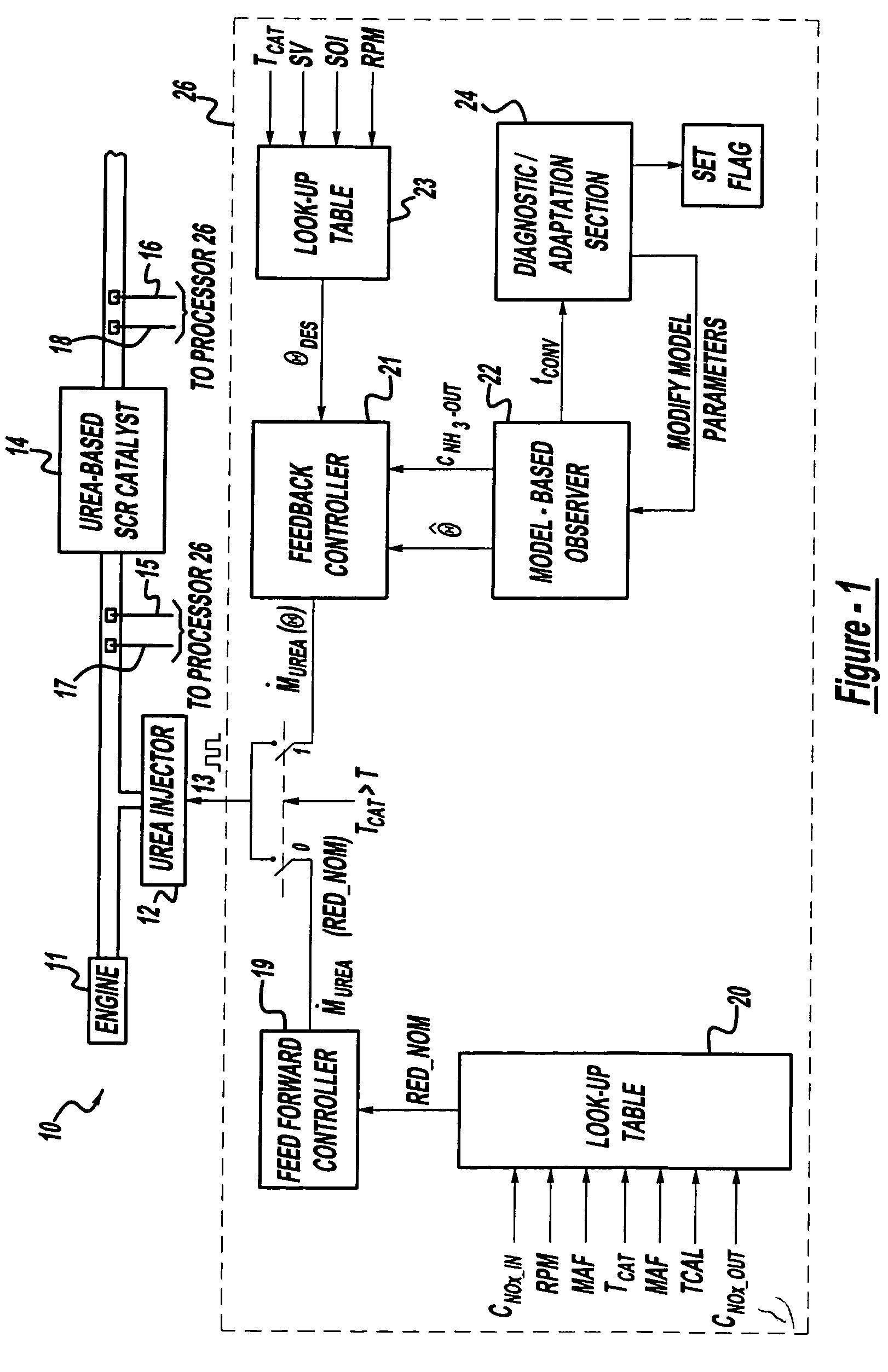Exhaust gas aftertreatment systems
- Summary
- Abstract
- Description
- Claims
- Application Information
AI Technical Summary
Benefits of technology
Problems solved by technology
Method used
Image
Examples
Embodiment Construction
)
[0016]Referring now to FIG. 1, an engine exhaust system 10 is shown for controlling injection of a reductant, here aqueous urea, into the exhaust gas mixture of an engine 11. More particularly, the reductant is injected into the exhaust gas mixture by an injector 12, the amount of such injection being in response to a control signal from processor 26 fed to the injector 12 on line 13. An exhaust gas aftertreatment device 14, here a urea-based SCR catalyst, is provided downstream of the reductant injection into the engine exhaust to facilitate the reaction between the reductant injected into the engine exhaust and NOx in the engine exhaust gas mixture to thereby reduce such NOx.
[0017]A pair of NOx sensors 15, 16 are provided upstream and downstream of the SCR catalyst, respectively. Measurements of the concentration of NOx in the exhaust gas mixture upstream (CNOx—in) and downstream (CNOx—out) of the SCR catalyst 14 provided by the NOx sensors are fed to a processor 26. Alternativel...
PUM
 Login to View More
Login to View More Abstract
Description
Claims
Application Information
 Login to View More
Login to View More - R&D
- Intellectual Property
- Life Sciences
- Materials
- Tech Scout
- Unparalleled Data Quality
- Higher Quality Content
- 60% Fewer Hallucinations
Browse by: Latest US Patents, China's latest patents, Technical Efficacy Thesaurus, Application Domain, Technology Topic, Popular Technical Reports.
© 2025 PatSnap. All rights reserved.Legal|Privacy policy|Modern Slavery Act Transparency Statement|Sitemap|About US| Contact US: help@patsnap.com



